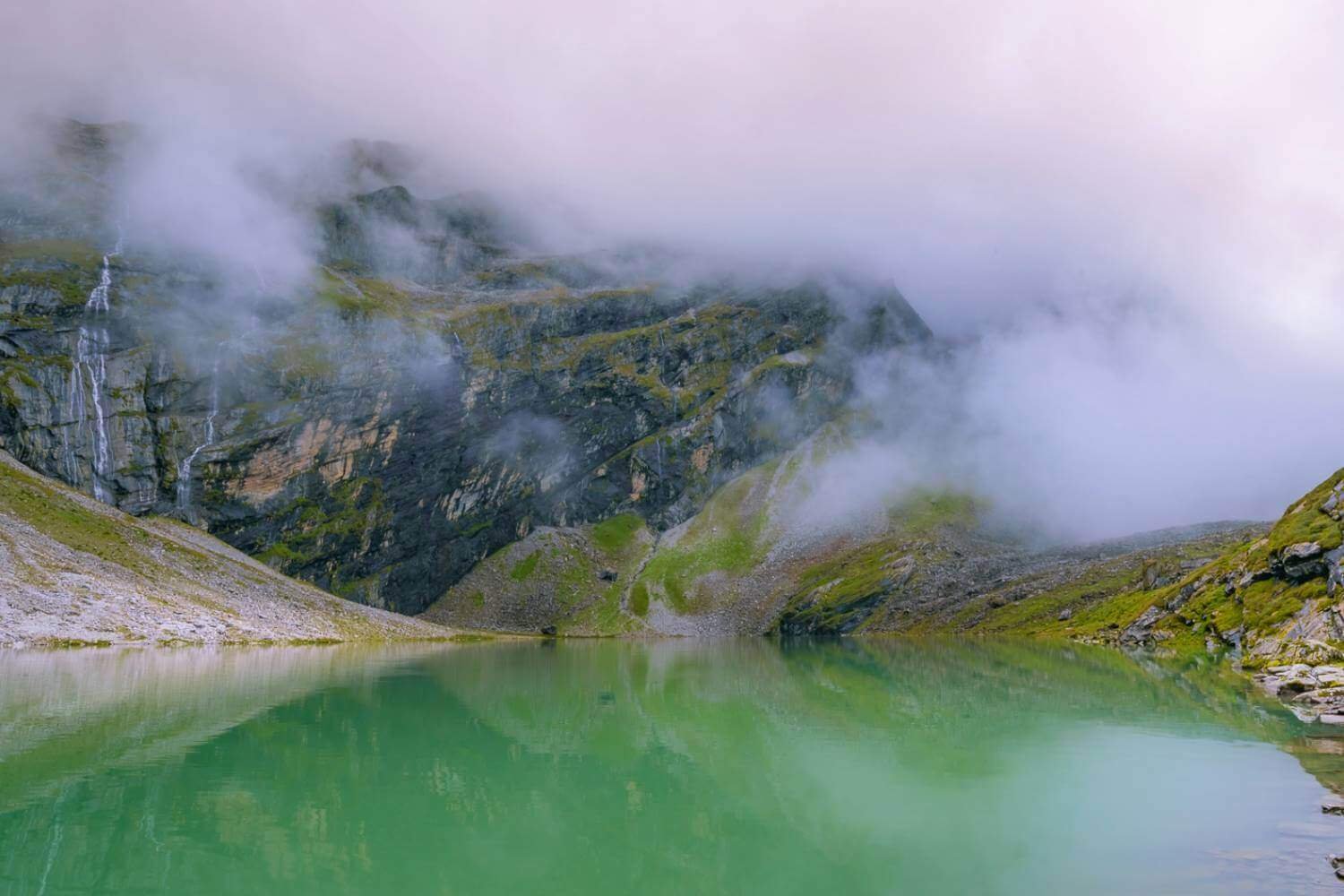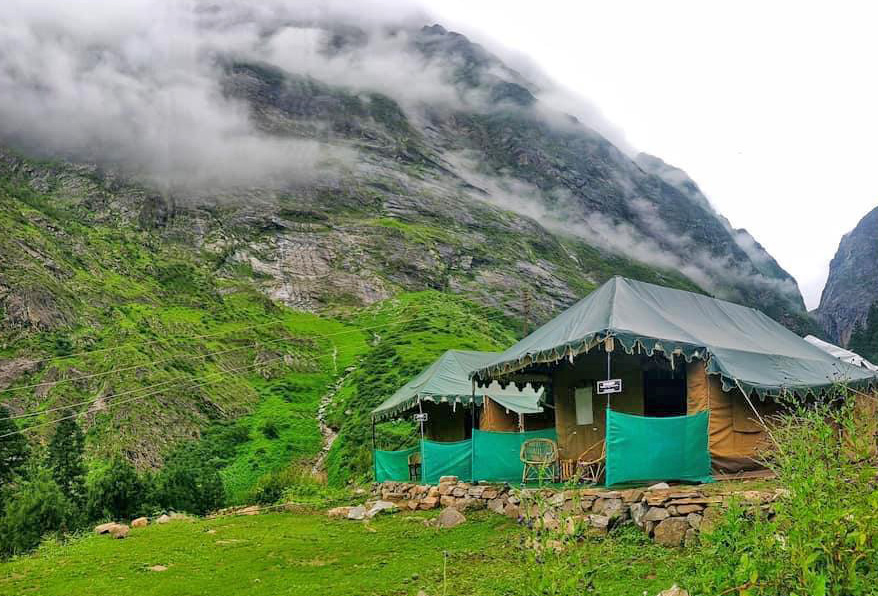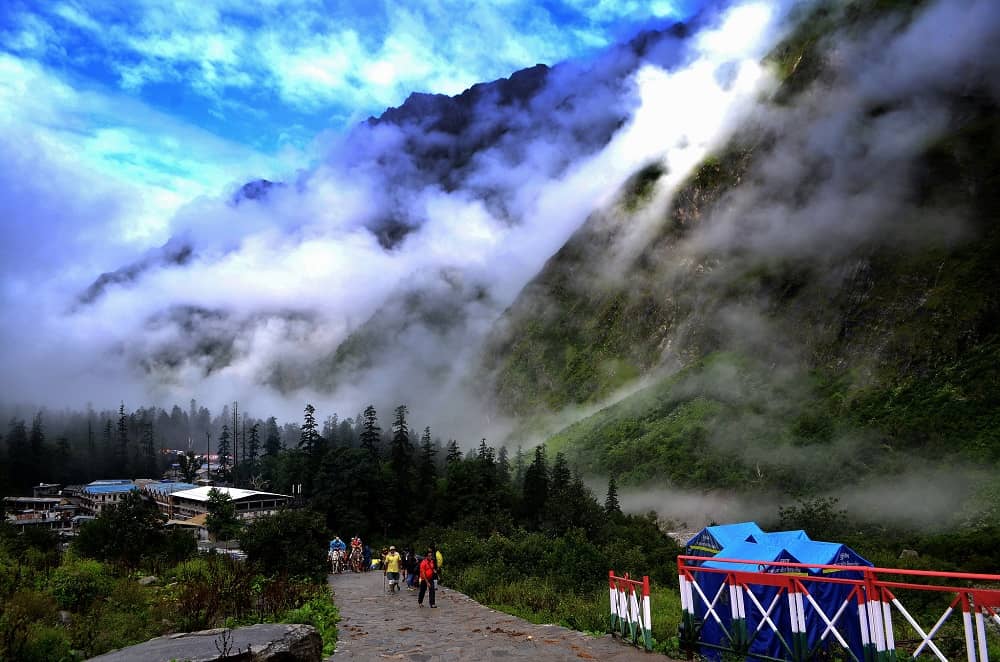Hemkund Sahib
Published on November 09, 2024
Hemkund Sahib: A Sacred Journey to the Heart of the Himalayas
Hemkund Sahib, situated at an altitude of 4,329 meters (14,200 feet) in the Indian state of Uttarakhand, is one of the most revered and spiritually significant pilgrimage destinations for Sikhs around the world. Located in the remote and pristine Garhwal Himalayas, Hemkund Sahib is known for its breathtaking beauty, spiritual sanctity, and the challenging yet rewarding trek that leads to its doorstep. The Gurudwara (Sikh temple) at Hemkund Sahib, dedicated to Guru Gobind Singh, the tenth Sikh Guru, stands as a beacon of peace and devotion amidst snow-clad peaks and a glacial lake.

Spiritual Significance of Hemkund Sahib
Hemkund Sahib is not just a Gurudwara; it is a place of immense spiritual energy. According to Sikh beliefs, it is the place where Guru Gobind Singh, in his previous life as a Brahmin child, meditated and attained spiritual enlightenment. The temple, surrounded by seven snow-covered peaks, symbolizes the purity and divine essence of the Himalayas. For Sikhs, Hemkund Sahib holds a special place in their hearts as a site where Guru Gobind Singh is said to have experienced a profound spiritual connection.
The serene glacial lake, known as Hemkund Lake, situated beside the Gurudwara, is believed to possess purifying properties, and pilgrims dip into its icy waters to cleanse themselves spiritually. It is said that only those who have a pure heart can reach Hemkund Sahib, making the journey a transformative experience for the pilgrims.
How to Reach Hemkund Sahib
Reaching Hemkund Sahib is a physically demanding journey, but the reward is unmatched. The trek to this sacred site is undertaken by thousands of pilgrims every year, and while it is a challenge, the awe-inspiring surroundings and spiritual atmosphere make it an unforgettable experience.
Base Camp: Ghangaria
Ghangaria is the starting point for the trek to Hemkund Sahib. A small village located about 13 kilometers from Govindghat, Ghangaria is the base camp for trekkers and pilgrims heading to both Hemkund Sahib and the Valley of Flowers. The village has basic accommodations, including guesthouses, dharamshalas (pilgrim rest houses), and small eateries where trekkers can rest and prepare for the challenging trek ahead.

The Trek from Ghangaria to Hemkund Sahib
The trek from Ghangaria to Hemkund Sahib is 6 kilometers long, and while it is steep and tiring, the beauty of the surrounding landscape makes the climb worthwhile. The trail follows a rugged path through dense forests, gushing streams, alpine meadows, and cascading waterfalls. Along the way, trekkers are treated to panoramic views of the mighty peaks of the Himalayas. The air gets thinner as you ascend, and the trek becomes more strenuous, but the spiritual significance and the tranquil surroundings help pilgrims push forward.

The path is well-marked, and along the way, there are rest stops where trekkers can take a break and hydrate. As you near the top, the air gets colder, and the stunning sight of Hemkund Lake and the Gurudwara comes into view.
Difficulty and Duration
The trek is considered moderate to difficult due to its steep inclines, rocky paths, and the high altitude. On average, it takes around 4 to 6 hours to reach Hemkund Sahib from Ghangaria, depending on one’s pace and stamina. Due to the challenging nature of the trek, it is essential to be physically fit and acclimatized to the altitude before embarking on this journey.
The Hemkund Sahib Gurudwara and Hemkund Lake
Upon reaching Hemkund Sahib, trekkers are greeted by the peaceful sight of the Gurudwara and the glacial lake that lies beside it. The Gurudwara is a beautiful, white marble structure that stands in stark contrast to the snow-clad peaks surrounding it. The Gurudwara is dedicated to Guru Gobind Singh, and pilgrims often meditate, offer prayers, and seek blessings here. The spiritual atmosphere of Hemkund Sahib is unlike any other, with the hum of prayers, the sound of the wind, and the peaceful silence that envelops the entire place.
The Hemkund Lake is the focal point of the pilgrimage, surrounded by lush alpine vegetation and towering peaks. The lake is icy cold, and while taking a dip in its waters is considered sacred, only the brave venture into the freezing waters. It is believed that bathing in the lake cleanses the soul, offering spiritual purification.
Langar at Hemkund Sahib
As with every Gurudwara, Hemkund Sahib has a tradition of Langar, the community kitchen that serves free meals to all visitors, regardless of their background. The Langar at Hemkund Sahib is an essential part of the pilgrimage experience, and pilgrims and trekkers gather to share a simple meal of dal, roti, and rice. The tradition of Langar is a reflection of the Sikh values of selfless service and equality.
Best Time to Visit Hemkund Sahib
The best time to visit Hemkund Sahib is during the summer months, from May to October, when the weather is more favorable for trekking. The Gurudwara remains closed during the winter (from November to April) due to heavy snowfall and extreme cold temperatures.
The peak pilgrimage season is from July to September, when the Valley of Flowers is in full bloom, making it the perfect time to combine a visit to both the Valley and Hemkund Sahib. The months of June and October are slightly less crowded, providing a quieter, more serene experience.
Accommodation and Facilities
At Hemkund Sahib, basic facilities are available for pilgrims. The Gurudwara has dormitory-style accommodations, and visitors can also stay in Ghangaria, which has a range of guesthouses, small hotels, and restaurants. Due to the popularity of the pilgrimage, it is recommended to book accommodation in advance, especially during peak season.
Trekking Tips and Recommendations
-
Physical Fitness: The trek to Hemkund Sahib is strenuous, and trekkers should be in good physical condition. Prepare for the altitude by spending a couple of days in Ghangaria or nearby areas to acclimatize before attempting the trek.
-
Weather and Clothing: The weather in the Himalayas can be unpredictable, so it is important to carry warm clothing, rain gear, and sturdy trekking shoes. Even in summer, the temperature can drop sharply in the evenings and at high altitudes.
-
Altitude Sickness: Hemkund Sahib is located at a high altitude, and trekkers may experience altitude sickness. It’s important to take regular breaks, drink plenty of water, and avoid overexertion.
-
Permits: Trekkers are required to obtain a permit for the Hemkund Sahib trek, which can be obtained at Govindghat or Ghangaria. The permit is usually valid for the entire duration of the trek.
-
Respect Local Customs: As Hemkund Sahib is a sacred site, it’s important to respect the local customs and traditions. Cover your head before entering the Gurudwara, remove your shoes, and maintain silence to preserve the sanctity of the place.
Conclusion
A visit to Hemkund Sahib is more than just a trek; it is a life-changing spiritual journey. Whether you are a pilgrim seeking blessings or an adventurer in search of the stunning Himalayan landscapes, Hemkund Sahib offers both physical and spiritual rewards. The trek, though challenging, provides an opportunity to connect with nature, experience the profound energy of the Himalayas, and find peace at one of the holiest sites in Sikhism. Hemkund Sahib is truly a destination that stays in the hearts and minds of those fortunate enough to visit it.
.png)